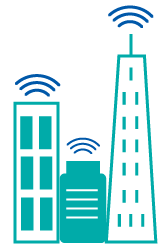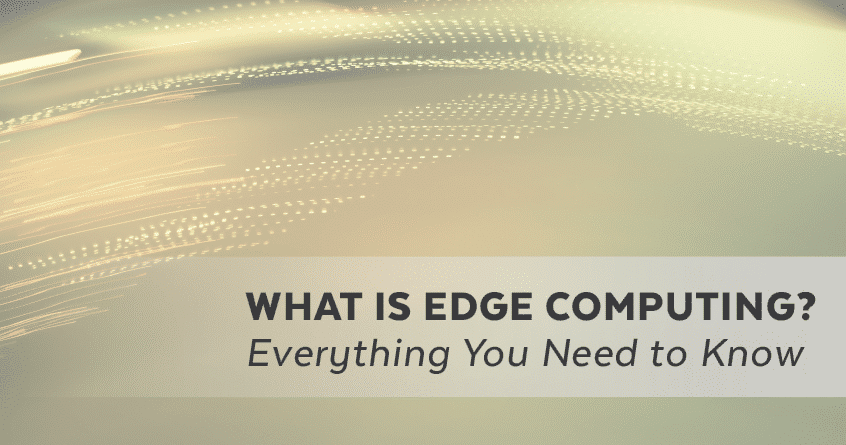A flood of data engulfs today’s business environment, which changes how companies handle computing. That explains why enterprises are increasingly adopting edge computing, an IT framework that processes data at the point of generation — the edge.
Though it serves a similar role as remote data centers, edge computing has several benefits. It reduces latency, gives optimal protection against data breaches, reduces data handling costs, and enhances scalability.
Versa Technology, a company selling the hardware used in IT projects, has explored edge computing to help businesses understand how the technology works and the ultimate benefits of adopting it.
Edge Computing Defined
Edge computing is an IT architecture that helps enterprises process information near or close to the source of data generation. It eliminates the need to send essential business information to remote data centers, as is common with cloud computing.
A few years ago, this technology was widespread in robotics, artificial intelligence, health care, and other sectors that needed computing power close to the source. But, today, any enterprise, small or big, can use it to eliminate the inconveniences associated with remote data centers.
Information technology reports show that edge computing’s global market will keep growing at a compounding rate of 38.9%, from 2021’s $7.43 billion. Computing technology is increasingly getting traction in the utility, logistics, retail, healthcare, and agriculture sectors.
How Does it Work?
Basic edge computing systems have four essential components, a cloud, an edge device, an edge gateway, and an edge server. These components work synergistically to help the edge computing system function seamlessly.
The cloud: The cloud is the central location where enterprises store the applications used in the system. The repository is also a source or destination for data needed/generated by other edge computing components.
The edge server: The edge server is a general-purpose computer that connects the various involved networks. To reduce latency and improve load times, the servers have excellent storage space, memory, and several cores of computing capacity.
The edge gateway: An edge gateway is a cloud server that hosts enterprise workloads alongside helping in tasks like tunneling, network termination, protocol translation, firewall protection, and wireless connection.
Edge devices: An edge device is an umbrella term for the hardware that collects, processes, and executes data in real time. They include ATMs, sensors, routers, routing switches, and intelligent surveillance cameras.
The Difference Between Edge, Cloud, and Fog Computing
In cloud computing, enterprises store information in distant third-party servers rather than local data centers. Cloud computing saves businesses from buying software, databases, and hardware needed to run an independent data center.
Fog computing infrastructure combines the concepts of cloud and edge computing. The system processes and stores some information on-site while it sends less sensitive data to cloud systems on remote premises.
The edge computing IT infrastructure processes and stores an enterprise’s data onsite. It eliminates all issues associated with cloud storage, including low latency, high insecurity, and lack of real-time data analysis.
Edge Computing Is Important
As noted by Peter Sondergaard, a research executive at Gartner research, “Information is the oil of the 21st century, and analytics is the combustion engine.” The analyzed information improves operational efficiency, enhances customer satisfaction, streamlines decision-making, and cuts business costs.
Edge computing’s design is to help enterprises make the most use of the 21st-century oil — information. How? This information technology infrastructure allows enterprises to store and process data onsite, eliminating the barriers that prevent businesses from using all information collected.
Edge Computing Uses
Although relatively young, this technology has found a home in several enterprises, including autonomous vehicles, health care, manufacturing, gaming, and artificial intelligence. Here are examples of how some of the sectors use the IT infrastructure.
Health Care
The technology helps healthcare facilities immediately process and act upon health information collected from medical devices, wearables, and doctor offices. Such information would be less useful if it was stored in distant data centers for future use.
Besides processing information in real-time, this IT infrastructure helps determine the data that can be stored while discarding that which is less helpful. It saves storage space for valuable healthcare information.
Smart Cities
Edge computing is an essential resource for intelligent traffic control used in smart cities. Administrators use this information processing technology to collect data from vehicle fleets and make adjustments to streamline traffic flow.
For instance, with this information technology infrastructure, traffic control administrators identify congested routes, and then direct vehicles to alternative routes to ease congestion.
Manufacturing and Processing Industries
The system provides the processing power that helps companies analyze data onsite and make adjustments to cut costs and improve product quality, among other benefits. The technology improves machine-to-machine communication since data is processed onsite.
The Benefits of Edge Computing
Primarily, edge computing cuts down the time businesses could have wasted sending and retrieving information stored in remote clouds. With edge computing, enterprises analyze data and make important decisions almost immediately.
Besides bringing the power of computing and storage near the source of production, edge computing comes with lots of other benefits, including:
Enhanced Security
Edge computing systems are more secure than the cloud since they hold limited amounts of data, most of which are incomplete. The technology also improves security by eliminating the need to crisscross data from the edge to remote data centers via vulnerable networks.
Reduced Operational Costs
Storing data on remote premises is costly. Enterprises, especially those handling massive datasets, spend more on moving data back and forth. Businesses using remote cloud and data centers also have to invest in more bandwidth, further pushing the costs up. Edge computing reduces costs by eliminating the need to send or retrieve data from remote data centers.
Reliability
Edge computing does not rely on communication networks like the internet and satellite connection. It will keep operating even when the satellite and internet connection are down. Remote data centers like cloud computing lack this reliability.
Conclusion
Edge computing is a game changer in information management. It eliminates latency, improves data security, facilitates real-time data analysis, and cuts costs. The technology is an excellent alternative to the widely used cloud computing.
However, enterprises have to incorporate it with Power over Ethernet technology to leverage its full power. Why? PoE powers up and connects the required hardware using a single cabling network instead of two.
That’s where Versa Technology comes in. We supply the ethernet extenders, switches, controllers, and other accessories needed to set up your edge computing system. We offer our products at fair prices and premium tech support to help you take advantage of cutting-edge technologies.
Contact us to learn more about edge computing and Power over Ethernet.

